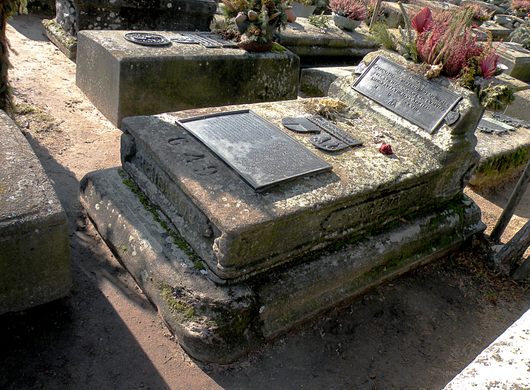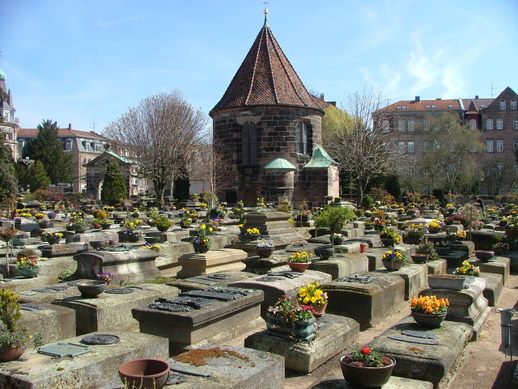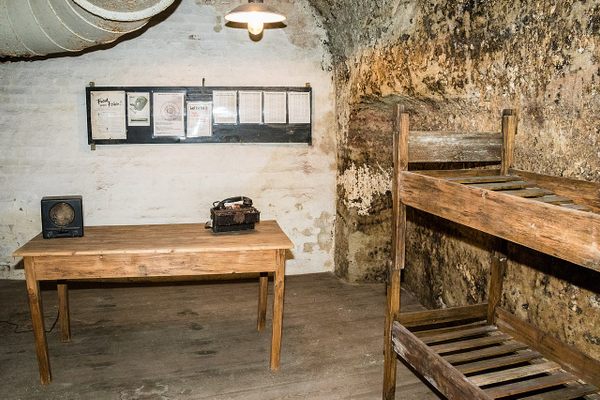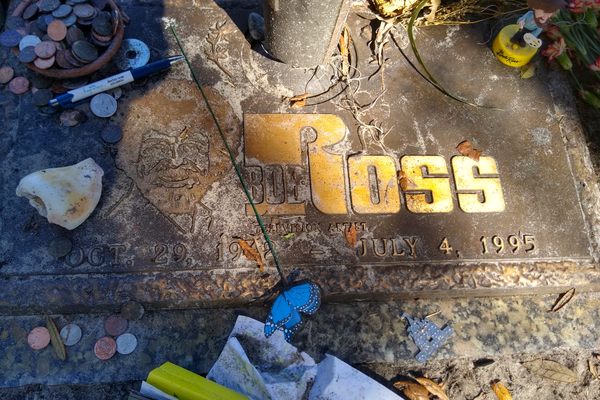Albrecht Dürer's Grave
The final resting place of one of Germany's most accomplished Renaissance men.
In the 13th century, this cemetery and its corresponding chapel were built outside the walls of the city of Nuremberg. Over the centuries, St. Johannis Church served as the burial place of important people who lived in the city, including one of the most famous German painters of the Renaissance: Albrecht Dürer.
Born in 1471, Dürer was an artist and theorist of the German Renaissance whose vast body of work includes engravings, oil and watercolor paintings, and books. He died in 1528, at the age of 56. Dürer was born in Nuremberg, and spent many years there as an adult.
The cemetery is famous for its epitaphs, the bronze inscriptions on the sandstone gravestones. Translated into English, the epitaph on Dürer’s grave reads:
Rest here, oh artist prince / Thou more than worthy man! / In mastering all arts / None equalled thee.
Thy work on earth complete / In heaven is thy home; / Thou paintest, saintly now, / Beside God’s sacred throne, / The builders, sculptors, painters / Call thee Patron (saint) / In death they now award thee / The (artist’s) laurel crown.
The glory of Germany is dead. / ALBERTUS DURERUS / Light of the arts, Sun of the artists / Ornament of Noris, his native town, / Painter, Graphic artist, Sculptor / Without precedent because ominiscient, / Found worthy by foreigners who / Recommend to imitate him. / Magnet of Magnates, grindstone for talents, / After one hundred fifty years / No one having been equal to him / He must repose here alone. / Traveller, strew flowers. / In the year of Salvation 1681 / J.D.S.
The cemetery is also the resting place of Veit Stoß, sculptor, and Hans Sachs, Meistersinger. The location was formerly a “Siechkobel” (leper house). It was transformed into a cemetery in 1238. The reason for the stone sarkophaguses, which are actually uncommon in Germany, is the plague. They were intended as vaults to enclose the sickness, in addition to the fact that the cemetery was located outside the walls of the city.
















Follow us on Twitter to get the latest on the world's hidden wonders.
Like us on Facebook to get the latest on the world's hidden wonders.
Follow us on Twitter Like us on Facebook